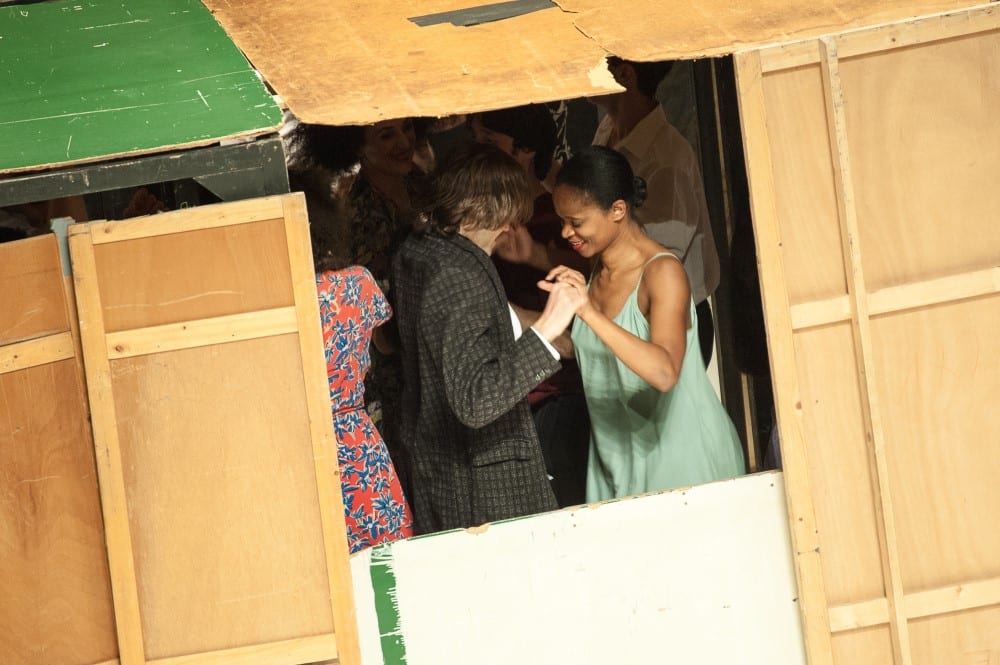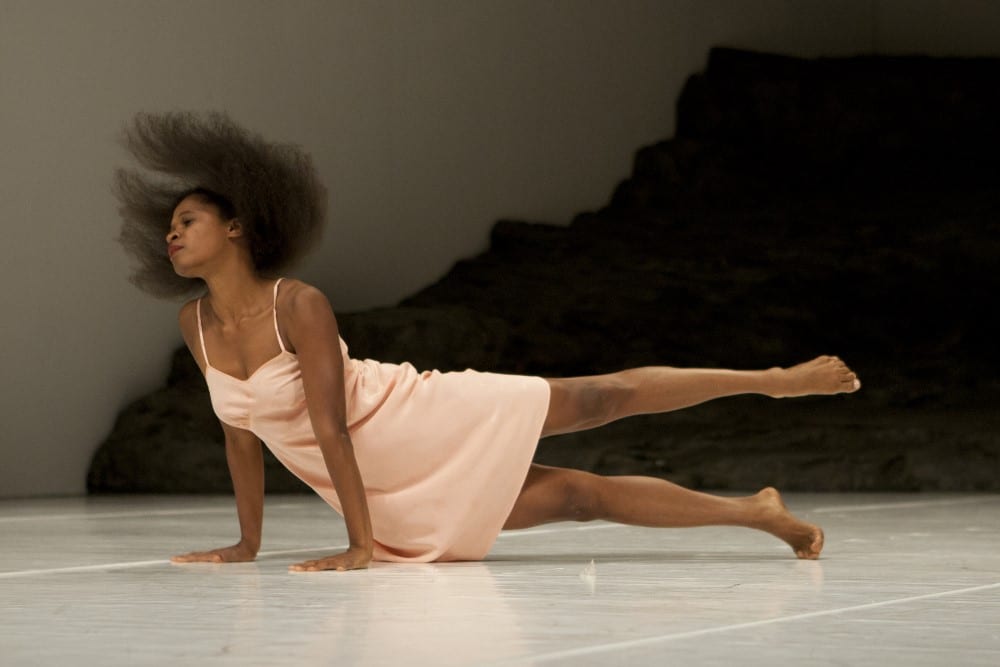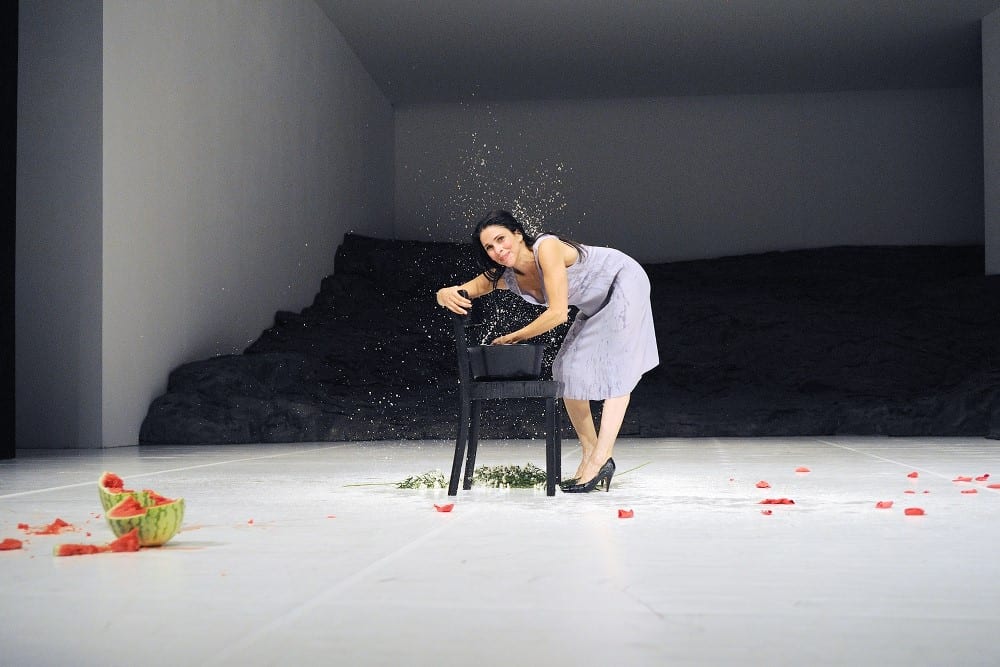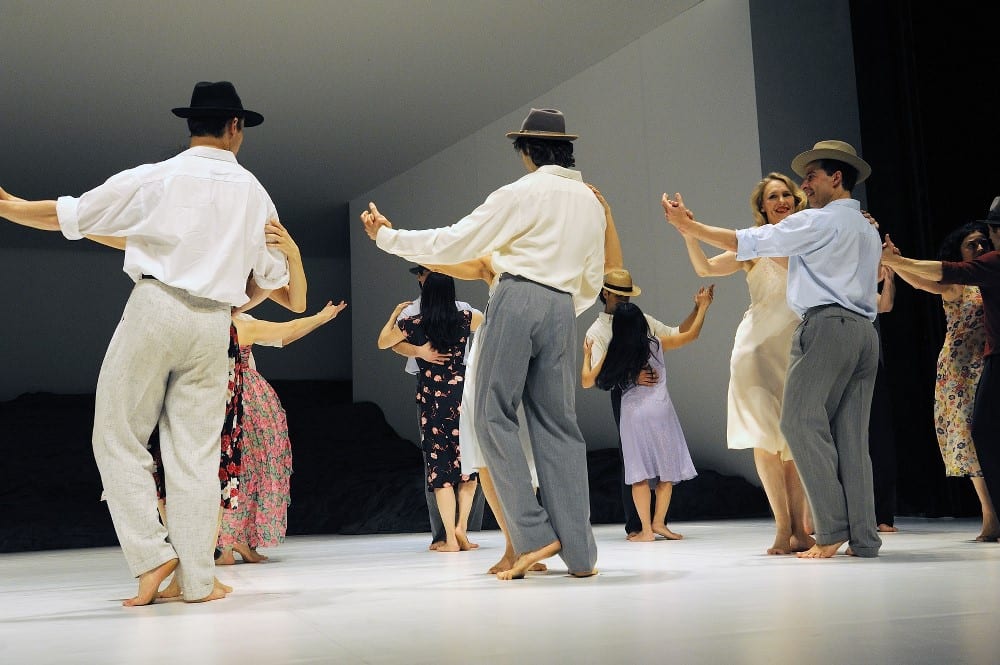It’s no surprise that the fabulous Sadler’s Wells performances of Masurco Fogo are completely sold out. For its erotic lightness of spirit, this 1998 life-loving piece with a cast of twenty dynamic dancers has a long reputation for being one of Pina Bausch’s most delightful and optimistic. Though she died eight years ago, her influence on her company is still entirely alive. We start on dry land, seducing, striving, often frustrated, she seems to want to say, and we at last lie down together at peace, on the sea-shore, lapped by nature’s wavelets.
Using her familiar mode of stringing together vignettes of serious choreography and silly music hall sketches, she invites the audience to join the hectic party. With them we celebrate physical display, the gamut of emotions, a joy in the body and sexualised relationships, and, self-reflexively, dance. Solo dancers repeatedly shimmy into becoming hip-grinding couples. The “fiery” mazurka referred to in the title and constantly quoted in steps and music, is a beat which, by many another name, occurs from the pre-history of the Hanoverian empire to contemporary Cape Verde and the favelas of Brazil.
The process of the creation of Masurco Fogo began in a three week long Portuguese residency in 1997. Pina Bausch, by then already famous for some twenty years, was commissioned to prepare a work for Lisbon’s world fair, Expo ’98. The theme of the fair was the sea, to honour Portugal’s history of nautical achievements and great ocean-going discoverers, signalling “a heritage for the future”. Although Bausch often uses water in her work, here the motif, especially its marine possibilities, is explored deliberately in countless ways, both puerile and profound. She sets Masurco Fogo firmly in the recent past, not the present. The heritage for the future, she seems to suggest in her optimistic piece, has to be love and peace – just as was signalled not so many years earlier by Portugal’s Carnation Revolution which brought down its dictatorship.
While this production’s brilliant use of video is entirely of our present, Pina Bausch, as ever, borrows relentlessly from German expressionism and Weimar cabaret of the 1920s, and from jazz-wise sexuality of the 1940 and 50s. The men wear shirts and pressed trousers, the women wear high heels, dresses that manage to both float and cling, and little in the way of underwear (we are invited to believe). Lovers come and go, strut and preen, switch partners. There is longing, release, seduction, jealousy, and all the time absurdity. Beach bathers splash and swim and surf in a sliver of sea, two women are in sexual competition using the size of their afro hairstyles, a knife-thrower bombards a woman with flowers, a hand appears out of a rubbish-bin and throws back a banana peel just thrown in, a woman in furs announces “All my animals died”, a woman in a bubble bath washes plates and passes them to a man doing the drying. Take the orgasm, suggests one of the dancers, it can be positive, negative, or spiritual. Really? Yes. Positive: “Oh yes, yes, yes!” Negative: “Oh no, no, no!” Spiritual: “Oh my God, oh my God!” Inexplicably, in the middle of all the rampant craziness unfolding on stage, this is hilarious. And did I mention the huge walrus who plods across the stage? Or the live chicken who eats pieces of watermelon?
Certainly, Pina Bausch can never leave aside the darkness that lurks just below the surface. Over and over lovers are left abandoned. One particularly unsettling scene depicts a gang rape. There are references in various forms to kicking the bucket or simply lying down and dying. But the shadow is minimised and when it shows, it is usually either comically or, at the wonderful denouement, benignly meditative and sexual. The audience cannot but leave the theatre smiling.




